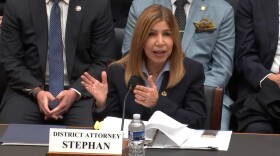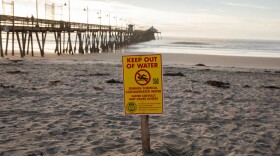San Diego City Council and mayoral elections made 2012 the year of campaign promises in City Heights. District 9 Councilwoman Marti Emerald and then-Mayor Bob Filner hit the campaign trail together, rallying the community with promises to build a skate park, let kids ride the bus for free and fix persistent infrastructure problems.
Filner's promise-fulfilling days were cut short ultimately by sexual harassment allegations and, later, his resignation. But Emerald and her staff have proven to be quite the cleanup crew, wrestling chunks of money from the city's coffers to make good on those campaign promises.
Borrowing a phrase from City Heights advocate Randy Van Vleck, "2013 was the year of funding" for Mid-City residents.
What that money is doing now:
The Skate Park

I first wrote about the community's dream to build a skate park in 2010. Since then, youth involved with community nonprofit Mid-City Community Advocacy Network have managed to generate an impressive number of newspaper headlines and city agenda items. Their advocacy has paid off.
The Capital Improvements Review and Advisory Committee, which advises the mayor on funding major capital projects like parks, recently approved $250,000 for a skate park at Park De La Cruz at 38th and Landis streets. The money comes from fees paid by developers in Districts 3, 4 and 9 and is enough to get the project to the development phase, essentially buying it a spot on the city's capital projects list.
Stacey LoMedico, head of the city's Park and Recreation Department, said the project will be included in the fiscal year 2015 budget. From there, city planners will figure out how much it will cost and how long it will take.
The city also agreed in April to use an $846,000 state grant to add a small skateboarding plaza to a park already planned for Central Avenue. The project is on track to be completed in November 2015.
Free Bus Passes

San Diego Unified agreed in April to pay $150,000 toward free Metropolitan Transit System passes for students at Crawford, Hoover, Lincoln and San Diego high schools. A couple of months later, City Council added $100,000 to the pot. The result is a one-year pilot program that will provide passes for 1,000 kids at risk of dropping out of school because they lack transportation.
The team behind the effort — called Improving Transportation in City Heights — said low-income youth needed help getting to class and internships. School bus routes have been slashed, access to cars is limited and the $36-a-month MTS pass is out of reach for many City Heights families.
Emily Serafy Cox, one of the community organizers behind the program, said 70 percent of the passes have been claimed. San Diego High School, which is situated along a trolley line, has handed out all of its passes. Students can still apply for them at Crawford, Hoover and Lincoln.
"They're already allowing young people to have the kind of mobility we hoped for," Cox said, adding that students are also using the passes to get to things like doctors' appointments.
UC San Diego researchers and a consulting firm, The Global Arc, are already surveying participating students and expect to have a study ready next summer to help leverage funds for a second year. Cox said program organizers plan to go after state, regional and local funds to keep the program going.
Streetlights

Filner's budget set aside $100,000 for streetlights in City Heights and southeastern San Diego. Residents in the older neighborhoods say the lack of lights is a public safety issue.
Marisa Berumen, Emerald's deputy chief of staff, said the community has given city engineers a wishlist of locations for new streetlights. Below are the proposed locations for City Heights.
The engineers currently are evaluating the list to see where they can make the most of the $100,000. Depending on where the lights are installed, the money will cover between six and 40 streetlights.
Installation in areas with wooden telephone poles and overhead wiring is the least expensive — you just add an arm and light to the existing pole for about $2,500, said city traffic engineer Eddie Flores. Lighting areas where the power source is underground would call for new poles and trenching — a process that could cost up to $15,000.
Flores said it will take about three months before the first streetlight is installed. Once engineers approve the locations, nearby residents have 30 days to weigh in.
Berumen said an additional $80,000 from a special community grant fund will cover new lights at the Willie Henderson Sports Complex in Mountainview.






